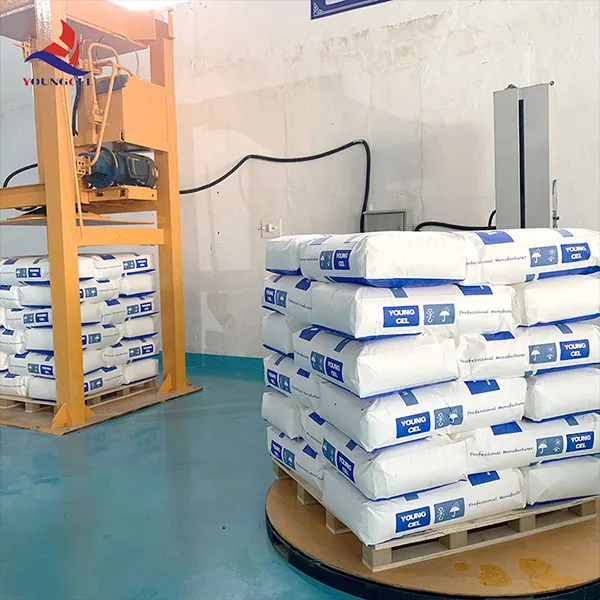Understanding Hydroxypropyl Methylcellulose (HPMC) A Versatile Polymer
Hydroxypropyl methylcellulose (HPMC) is a versatile and widely used synthetic polymer derived from cellulose, the natural polymer that forms the structural component of plant cell walls. As an etherified derivative of cellulose, HPMC offers a range of physical and chemical properties that make it valuable across various industries, including pharmaceuticals, food, cosmetics, and construction.
Chemical Structure and Properties
HPMC is formed by the substitution of hydroxyl groups in cellulose with hydroxypropyl and methyl groups. This alteration enhances the solubility and stability of cellulose in water, allowing for diverse applications. HPMC is typically a white to off-white powder and is considered non-toxic, making it an excellent candidate for both food and pharmaceutical applications.
The properties of HPMC can be manipulated by adjusting the degree of substitution of the hydroxypropyl and methyl groups. This flexibility allows manufacturers to tailor the viscosity, solubility, and gelation characteristics of HPMC to meet specific needs. It is soluble in water, forming a viscous solution that can thicken, emulsify, or serve as a film-forming agent.
Applications in Various Industries
1. Pharmaceuticals One of the most prominent uses of HPMC is in the pharmaceutical industry, where it serves as an excipient in drug formulations. Its ability to form hydrogels makes it useful for controlled-release formulations, allowing for a sustained release of active pharmaceutical ingredients (APIs). HPMC is also commonly used as a coating agent for tablets, enhancing stability and aiding in the swallowing process.
hydroxypropyl methylcellulose hpmc

2. Food Industry In the food sector, HPMC is utilized as a thickening agent, emulsifier, and stabilizer. It is often found in products such as sauces, dressings, and ice creams, where it contributes to texture and viscosity. Additionally, HPMC is favored in gluten-free baking to enhance moisture retention and improve the texture of baked goods.
3. Cosmetics and Personal Care HPMC is extensively used in cosmetics and personal care products, where it functions as a thickener, emulsifier, and film former. Its ability to improve product consistency and stability makes it ideal for lotions, creams, and gels. HPMC also finds application in hair care products, where it aids in providing hold and manageability.
4. Construction In the construction industry, HPMC is commonly used in cement and plaster formulations. It improves workability, enhances adhesion, and extends open time, allowing for better application of materials. HPMC also increases water retention, which is essential for the hydration of cement during the curing process.
Environmental Considerations
As a cellulose-derived product, HPMC is biodegradable and poses minimal environmental risks compared to synthetic polymers. However, manufacturers must ensure responsible sourcing and production practices to mitigate the environmental impact of the materials used in its synthesis.
Conclusion
Hydroxypropyl methylcellulose is a multifunctional polymer that has carved a niche for itself in numerous industries due to its unique properties. Its versatility in formulation and application makes it an invaluable ingredient in pharmaceuticals, food, cosmetics, and construction. As industries evolve and seek more sustainable solutions, the demand for HPMC is likely to grow, reinforcing its role as a critical component in the development of innovative products. Whether in a pill, a dish, or a cosmetic cream, HPMC continues to make its mark, showcasing the remarkable potential of modified natural polymers in today’s market.
-
Premium Detergent Grade HPMC Hydroxypropyl Methylcellulose: Superior Thickening & StabilityNewsAug.31,2025
-
HEC 100000 Hydroxyethylcellulose for Paint | Superior ThickeningNewsAug.30,2025
-
Wall Putty Rdp Powder Packaging DesignNewsAug.29,2025
-
Introduction to Hpmc Hydroxypropyl Methyl CellulosNewsAug.29,2025
-
Hpmc Industri Grade IntegrationNewsAug.29,2025
-
How to Choose the Right Construction AdhesiveNewsAug.29,2025




